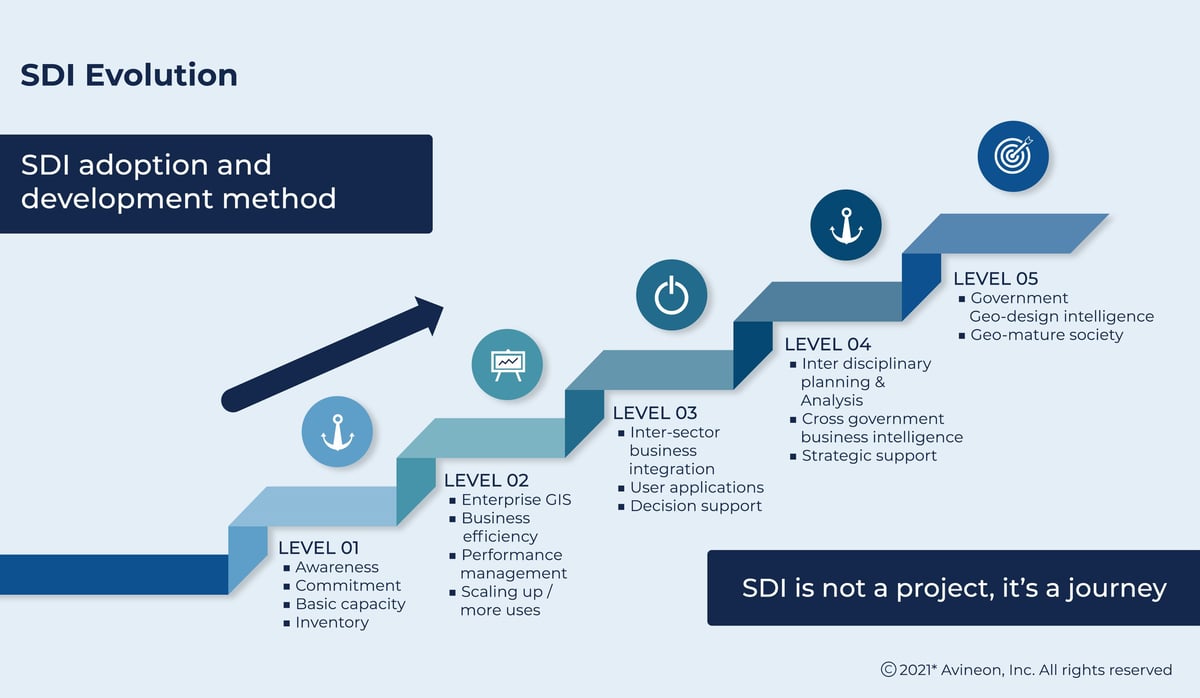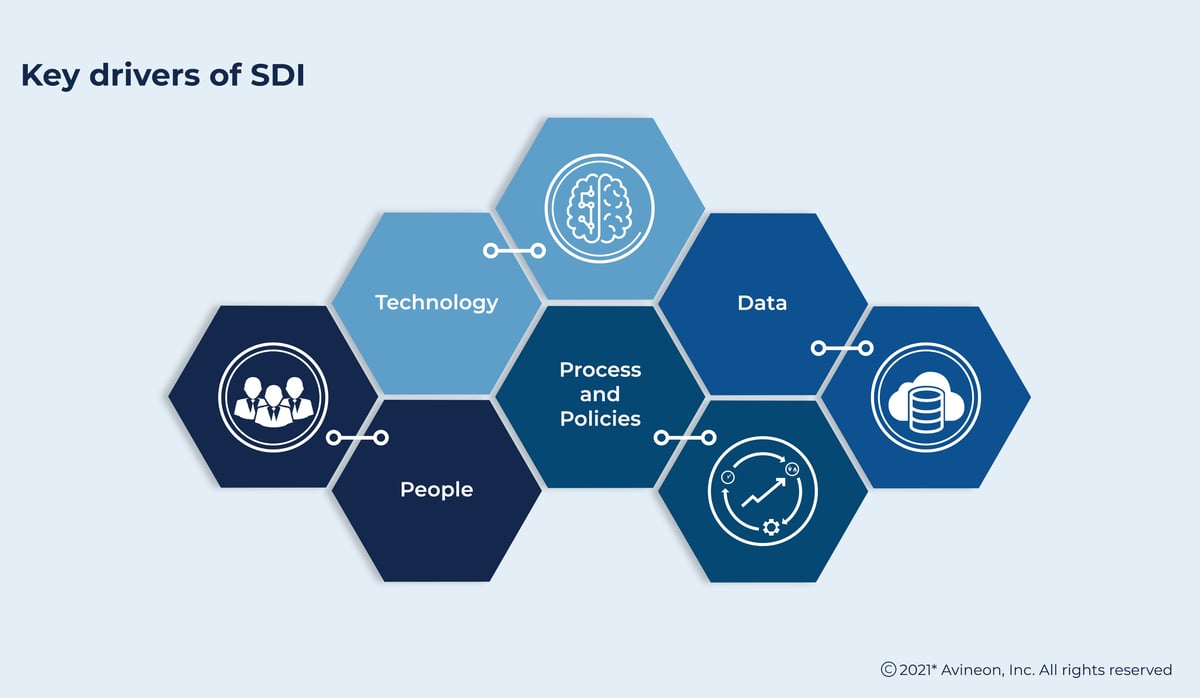Are you struggling to get stakeholders buy in to keep the momentum of your SDI implementation? Are you not able to realize the full potential of your SDI implementation? Is your SDI solution not reaching your intended audience? Avineon can help you in sustaining your SDI implementation and realizing the full potential of your investments.
Spatial Data and SDIs
Spatial data is ever changing and mostly owned by government agencies and departments. Typically, it is complex, to be updated frequently, not easily shared between organisations, and difficult to access by a broader community. All these factors contribute to the fact that the benefits of spatial data are often not fully realised.
To facilitate easy and/or secure exchange of spatial information, nations around the world are developing National Spatial Data Infrastructures (NSDI) portals. A NSDI is an initiative that creates an environment where government organisations can cooperate on, and thus improve, the management and sharing of spatial information.
Typically launched as a project, agencies responsible for NSDI implementation often find it difficult to sustain the momentum by keeping it relevant for all stakeholders, showing business value, and getting funding, which is important to keep SDI LIVE with UpToDate technology, data, support, and resources.

Key Focus Areas for SDI
As an organization with relevant experience in multiple state and national level SDI implementations, Avineon recognized certain key drivers for SDI agencies to keep SDI going - being:
- Technology
- Data
- People
- Process & Policies.

Under these key drivers, SDI agencies need to focus on the following:
| I. Technology |
|
|
Continuously source decision support tool requirements across stakeholders and encourage development and deployment of tools on the SDI platform. Establish both spatially enabled e-services and mobile enabled services and roll out applications that have a common interest across the community.
|
| II. Data |
|
|
Identify those data that have business value and establish a revenue model; establish a continuous assessment of data gaps, accuracy and quality; use automated tools to ensure high quality data; integrate non-spatial/business data with spatial data; provide hybrid data services; and establish mechanisms to source dynamic data from the crowd/community.
|
| III. People |
|
|
Establish working groups among stakeholders to resolve data ownership, quality, standardization, and technology related issues and encourage federated GIS teams to contribute to SDI databases. Of course, leadership in conferences and seminars to promote spatial data and technology use is important.
|
| IV. Process & Policies |
|
|
It is important to promote spatial data and technology use across stakeholders and establish clear data ownership between stakeholders. Agencies can adopt geo-maturity assessment techniques, data standards, and quality and sharing policy compliance audits to ensure stakeholders are committed and adhering to the spirit of SDI.
|
|
|
Support infrastructure funding to entities, support cloud deployments, establish bulk software license agreements across stakeholders to encourage optimal use of software, and ensure IT security and data security implementations and audits.
|
The Role of Avineon within SDI
Avineon has a vast experience in designing and implementing end-to-end SDI solutions for customers across the globe. Our core SDI expertise includes developing spatial data standards, real-world object catalogue, SDI database modeling, metadata standards, data sharing policy framework, data exchange services, SDI infrastructure design and commissioning, data consolidation and solution deployment, training, and maintenance.
In addition to this, we have dedicated SDI implementation teams with geographical standards and technology expertise.
Find out more about our SDI solutions by visiting our website or contact us for more information.


